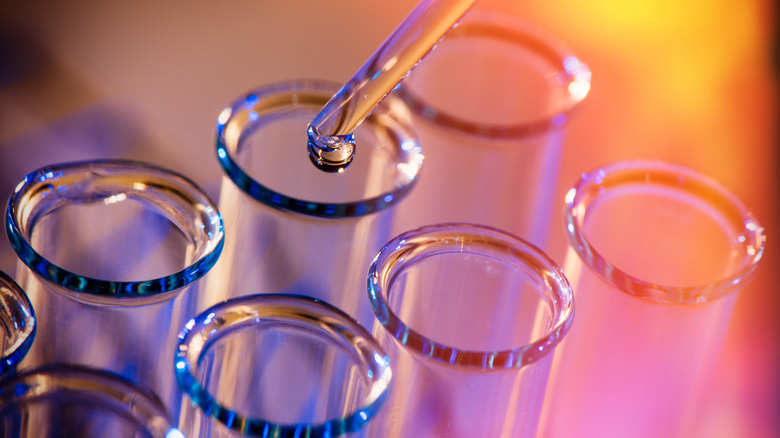Analysis Found More 'Forever Chemicals' In US Water Than We Thought
It may very well be that you've never heard of PFAS before. According to WebMD, PFAS, or perfluoroalkyl or polyfluoroalkyl substances — also known as PFCs, or perfluorochemicals — are a family of chemicals that have been in production for decades. The uses for PFAS, which have a knack for repelling both oily substances and water, range from non-stick pans to firefighting foam to stain-resistant carpet and fabric (via the Agency for Toxic Substances and Disease Registry.)
PFAS also go by another name owed to another key trait they have. They're known as "forever chemicals" because they never break down. Once in the environment, they simply accumulate. And the environment here refers to all of the soil, water, plants, and animals, including humans. So, while you may have never heard of PFAS, they are almost assuredly in your body in some concentration.
This is concerning for a number of reasons, chiefly as PFAS pose a strong potential health risk to humans, says the Interstate Technology Regulatory Council. These chemicals have been linked to decreased vaccine response, thyroid disease, elevated occurrence of certain cancers, and cardiovascular disorders.
For years, the U.S. Environmental Protection Agency has monitored levels of PFAS in water across the nation and taken action when a threshold is exceeded. But new research has found that their testing methodologies might be dangerously flawed.
Undercounting chemicals
Researchers working for U.K. newspaper The Guardian tested water from nine "PFAS hot spots," including Portsmouth, NH where a military-funded $17 million water treatment system was installed specifically to deal with the chemicals, using both the EPA testing method and one considered more robust. They found that the EPA's test undercounted PFAS levels, with their independent tests registering as much as 24 times the amount in the same water sample.
As The Guardian further explains, the problem with the test used by the EPA is that it only looks for 30 types of PFAS. To put that in context, there are 9,000 PFAS that are or have been used. The independent test used by The Guardian scans for a marker shared by all PFAS, discontinued or currently used. That means the chemical industry, which often creates a similar substance to take the place of one proven to be harmful, will remain several steps ahead of regulators in terms of detection if the EPA sticks by current protocols.
If you are understandably worried about PFAS, there are steps you can take to mitigate your level of exposure going forward. Clean Water Action suggests eliminating PFAS-coated non-stick cookware, switching to glass food storage containers, avoiding microwave popcorn bags, and buying non-PFAS dental floss, among other helpful hints.

